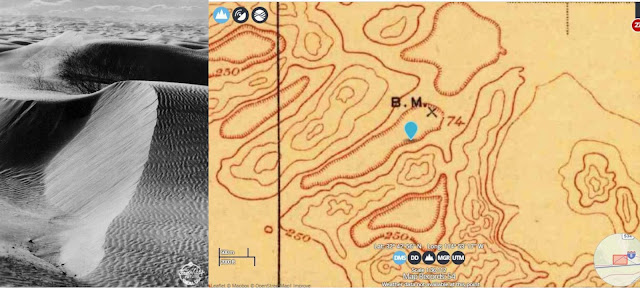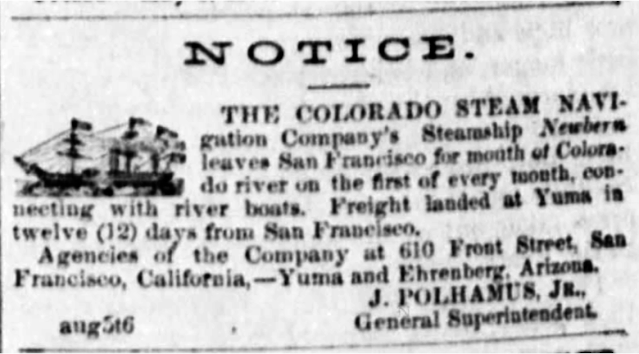The following is from "Prehistoric and Historic Gila County, Arizona" by Dan Rose. Published by Republic and Gazette Printery, Phoenix, Arizona, 1935
The holding of the celebration to commemorate the birth of Christ, the Saviour of mankind, in a saloon, was the talk of the Territory at the time. But, with due respect to churches that are dedicated to celebrate this transcendent event and impress its divine inspiration upon the minds of their votaries, let it be said here that no gathering of people in cathedral hall or simple church ever paid a more reverent homage to the Master of mankind's higher ideals, than the rough-hewn denizens of the mining camp of Globe that memorable Christmas Eve in the year 1876. The Knox and McNelly Saloon was one of the finest in the southwest. Its bar was of bronze oak and mahogany surface, which shone as glass. The back bar too was highly ornate, with its wonderful long mirror, decorated with glass chandeliers and beautiful vases, goblets and drinking vessels. Huge Rochester oil lamps suspended by other glass chandeliers illumined the large spacious hall as if it were day. Gambling layouts, faro, roulette, monte, and poker games were played in the back part of the saloon and the respective tables were crowded every day and night where thousands of dollars were won and lost.
When the news that Knox and McNelly were going to have a Christmas tree in their saloon with everybody invited, and that the bar and gambling would be closed during the event, reached the miners and prospectors in the hills and the people in the camp, the novelty and unique proposition took hold of their minds. They approved heartily and vowed to make the celebration an honored success. For, with all their wild, boisterous, rough, and daredevil mien, there was a tender cord in the souls of every one of them. The sentiment that played that cord was memories of Mother, Home, and Childhood -- Christmas Eve! What a feeling of joy it brings to millions of the Christian faith all over the world, and to the hardy and indomitable pioneers of Globe, its cheer and joy were none the less. Committees had been appointed to select presents for the pioneer families in the district, the John Branimans, Richard Freemans, Mr. Clover, John Hise, John C. Clark, grandfather of Mrs. Tony Neary, Mrs. John Griffin and Mrs. Doc Perry, now living in Globe, and a few others whom the writer has failed to learn. The exemplary pioneer family of William and Miriam Middleton, were living at Wheatfields at the time.
A beautiful young pine tree was brought down from the Pinal Mountains and set up in the saloon, its balsam fragrance filling the space with pleasing odor. Eight inches at the base, ten feet high, with its numerous branches one to four feet in length tapering to its top, it was indeed a wonderful tree fit for the gods to adorn. Red, white, yellow, green, blue, and brown ribbons were draped and twined around its boughs and trunk. Candles were arranged to shed a soft glow over its verdant beauty and then the presents were placed.
The saloon had been closed during the preparation, and its bar, back bar, and gambling tables were covered with white muslin cloth, as one of the gamblers said, to clear the minds of the most pious and prove to the skeptical that the celebration was in spirit and truth a real Christian affair.
It had been gently snowing through the day and when night came the little camp was wrapped in a mantle of white. The road, or street, through camp and rough board sidewalks shone brilliant where the lights from shacks and buildings along the way illumined the frozen gems of snow.
At eight o'clock the doors were opened and the people came to the saloon. As they entered, any sense of ridicule or banter, toward the event, was soon banished and reverence and silence gripped their minds instead. An usher directed them to where they were to stand during the ceremonies and, as they crowded in and took their places, and officer asked, "Did you leave your gun at home?" "Yep," "Sure," and "You bet your life," were the replies; one brawny miner, known for his fighting ability, cried out,
"Any man that would start a rumpus on a night like this otter be strung up on the sycamore," (the hanging tree on main street). As the crowd awaited the coming of the women and children to receive their presents, they represented a true type of the west; tall and short, stalwart, broad-chested, bearded men from the mines and trail, wearing hobnail or cowhide boots, blue overalls or jeans, blue, red, and brown shirts, low-crowned felt hats and mackinaws or blanket-lined ducking and buckskin coats. The town folks wore "store clothes" and kept up with the times, while the gambler and his class wore the most immaculate dress suits, boots and shoes, hats and derbys.
Subdued and low were the tones in which they addressed one another. No levity or expressions of ridicule escaped their tongues. Rather, a feeling of suppressed emotion masked their faces as the memories of childhood had taken hold of them again and with that same tense feeling of pleasant expectation they waited patiently for the most honored guests.
Finally they came, the women and children of Globe's earliest days, hesitant in their plain, neat clothes, coarse shoes and scarfs or shawls over their heads, timid as they approached the wonderful tree with boys, girls, and babies. Their timidity was soon dispelled when W.T. (Bill) McNelly, master of ceremonies, tall, Debonair, and handsome, spoke in kindly tones to them. Then Felix Knox, a dead game gun man, gambler, and gentleman, assured them that wonderful Christmas tree was for their pleasure and everybody would be disappointed if they did not enjoy it. The reserve was broken and one lady spoke, saying, "Mr. McNelly, I wonder if we cannot have a few words in prayer from someone?" This was a stickler for Bill; he had overlooked a bet.
But his mind was active, he answered, "Sure ma'am." Then he called out, "Is there anyone here who has real honest religion enough in his toughened soul to give us a word of prayer?" Out from that hardened crowd of rough frontiersmen a tall, powerful man with black beard, blue eyes, and raven black hair hanging down to his shoulders, blue shirt opened at the throat, brown jeans tucked in cowhide boots, a wonderful specimen of physical and intelligent manhood of the west, stepped to the side of the tree and in a clear, mellow voice told of that Divine Hour at Bethlehem centuries ago, when Christ, the Son of God, was born to the world to teach mankind of the true and only God that they might enjoy eternal life. He painted, in words, a picture of the sufferings of the Saviour and His death and final victory over mortality and His ascension to the throne of God.
His hearers stood spellbound as he discoursed to them. Handkerchiefs were to be seen wiping away starting tears upon women's cheeks. Men, when their emotions were about to overcome them, drew back into the crowd to hide their weakness. "And now, my friends," he concluded, his face aglow with zeal and fervor, "I will close by quoting a verse which I feel you will all agree is appropriate to this assembly of people and the celebration:
'Whether it be in cathedral hall, Or the snow bound north where the moose herd calls Or out upon the raging main, Or the Dantic regions of our western plain, The spirit of Christ abides in men. And to those who are of a rougher mien With that self same spirit, we say, Amen'."
After these simple truths were expressed a short prayer was said by the lay preacher, then he withdrew to the crowded doorway and disappeared in to the night. No one tried to stop him; no one knew who he was, but his mellow fervent voice and the sermon he gave to them lingered in their minds and it was some time before the spell or its soothing influence was broken. The distribution of woolen mittens, scarfs, and other valuable necessities for the women, and nuts and candy for the children and gifts from personal friends to each other climaxed the occasion; the merriment and rejoicing waned and the families departed, happy and bubbling with glee.
The bar and tables were stripped of their coverings and opened for business. Those who remained were hesitant and shy at beginning their wild life again, as if the event, just over, was too sacred to mar by the spirit of Bacchus being presented to the saloon. However, the urge to maintain the standard of life they lived was too strong to resist and soon the scenes of Christian prayer and festivities were turned into a wild, boisterous roar of mingled songs and happy greetings; the old carefree life of the frontier was in full swing again.
Many HUGE THANKS to Lee Ann Powers for her gracious share of Dan Rose's Christmas Story!




















































